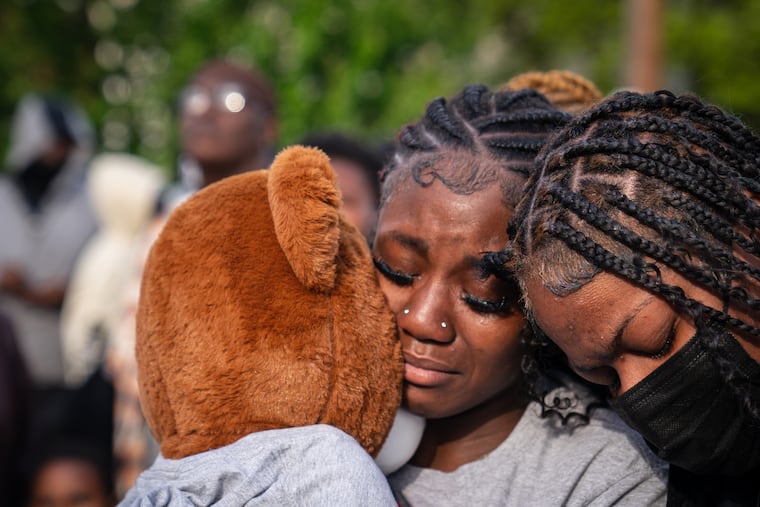Kids get shot and killed every other week in Philadelphia. Can Mayor Parker stop the violence? | Editorial
The more than 400 shooting deaths last year — especially the children killed — make clear the dire emergency facing the city.

Nearly every other week last year in Philadelphia, a child was shot and killed. Most were teenage boys, but there were some girls, as well, including a 2-year-old. All of the victims were children of color.
Beyond the statistics are the names and faces of 23 young people just starting out. They are: DaJuan Brown, 15; Nazeem Rains, 17; Wort Whipple, 14; Neko Rivera, 15; Hezekiah Bernard, 12; Diora Porter-Brown, 2; Randy Mills, 15; Ruby Corchado, 14; Jaseem Thomas, 16; Tysheer Hankinson, 16; Laron Williams Jr., 12; Semaj Richardson, 16; Devin Weedon, 15; Shaheed Saoud, 16; Anthony Pinckney, 14; Naqui Holley, 17; C.J. Johnson, 16; Khalif Frezghi, 17; Nafis Betrand-Hill, 16; Keivon Abraham, 16; Isaiah Odom, 17; Salaah Fleming, 14; and Malik Ballard, 17.
Several grew up in poverty and faced significant trauma, including the death or incarceration of a parent or guardian, homelessness, violence, and substance abuse. Some were ensnared in the juvenile justice system. Each child had a story and future that was cut short. Their loss had a ripple effect across families, friends, and neighborhoods that have mostly become all too familiar with gun violence.
Inquirer reporter Ellie Rushing documented their life stories, including their very real struggles. Those individual portraits put names and faces to the broader challenges facing many families in the city from poverty, drugs, education, and easy access to guns, and offer compelling hints of ways to intervene.
Many of those issues are not easily solved. But the fact that so many children have lost their lives underscores the urgency needed to tackle these problems. Already this year, Tyshaun Welles, 16, died after getting shot by a stray bullet while standing on a SEPTA train platform below City Hall.
Welles’ death is a painful reminder that everyone is at risk in the city. Indeed, there were 410 homicides last year in Philadelphia. That’s a significant drop from the more than 500 killings in each of the previous two years, but still way above the historic average over the past two decades, when the number topped 400 only once.
In addition, more than 1,200 people were shot in the city last year. While that was a 30% decline from 2022, the number of shooting victims was still higher than any pre-pandemic year since at least 2015.
Doing nothing or being satisfied with incremental change is not an option. Lives are being lost and harmed every day. The death of a child feels especially painful, as they lose their lives before ever getting a chance to live them.
Attention must be paid.
» READ MORE: Philadelphia’s gun violence took their children. Now they are giving the city a healing garden. | Helen Ubiñas
Mayor Cherelle L. Parker was elected last year largely because of her tough-on-crime plans aimed at combating the spike in gun violence. Parker has made it clear that she alone can’t solve all the city’s problems, and has called on others to join in the fight. But it will be up to Parker to mobilize and lead that effort.
The more than 400 shooting deaths last year — especially the 23 children — make clear the dire emergency facing lawmakers, law enforcement, public health officials, and educators.
Parker has the power, personality, and political prowess to bring various leaders together and get them to work toward her goal of making Philadelphia the “safest, cleanest, and greenest” big city in the country. Her first big test will be how her administration handles the shameful public health and safety emergency that has been allowed to unfold for far too long in Kensington.
Parker has promised to shut down the open-air drug markets and help the unhoused battling addiction, while also supporting residents there. Getting that right can set the tone and build momentum toward reducing gun violence across the city. We owe at least that much to the children.